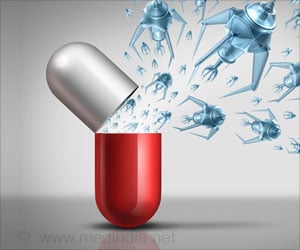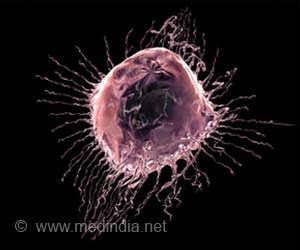According to researchers, bisphenol A, a chemical used in plastic bottles and other household products may be linked to the development of breast cancer
According to researchers, bisphenol A, a chemical used in plastic bottles and other household products may be linked to the development of breast cancer.
Bisphenol A, “pseudo-oestrogen” which mimics female hormones, can stimulate cancer cells, when present in high concentrations.Though previous studies suggest that natural changes in the oestrogen-like chemical after entering the body makes it harmless. However, a U.S. study revealed that these chemicals retain their carcinogenic properties even after modification inside the body.
But this doesn’t prove that there is a link between this chemical and cancer in human, according to cancer charities. They added that more research was required.
BPA is used in the production of food containers, CDs and DVDs, car parts and in dental sealants. According to previous researches, BPA escapes from products and may be absorbed at low concentrations into the body.
Researchers from Indiana University and the University of California conducted a study on BPA and its possible link with cancer development. Their study was recently published in the journal Chemistry & Biology.
In this study cancer cells and enzymes were subjected to extremely high concentrations of the chemical - higher than those normally experienced by humans. This was done with the aim of stimulating the cumulative effect of low BPA concentrations during a human's lifetime, according to Dr. Theodore Widlanski.
Advertisement
"These guys were aiming at what I'd say was the 'missing link,'" added Patricia Hunt, a molecular bioscience professor at Washington State University who has conducted her own studies suggesting a link between BPA and birth defects in mice. "This is a first step, and a really important first step," she said.
Advertisement
According to him, even if BPA had a role in cancer growth, it may be in combination with several other cancer-causing compounds that were responsible for the disease. More research was needed on BPA, according to cancer experts.
Professor David Phillips, from Cancer Research UK, said: "They have shown how BPA could be taken up and processed by cancer cells, but the study has not shown any human cancer risk from this level of exposure." The bottom line, according to Widlanski: "If you weren't alarmed yesterday about BPA, then you shouldn't be alarmed today. Nothing we have shown changes the innate danger. We have just reported a mechanism."
BPA was defended by the plastic industry. "BPA has been extensively studied for its potential to cause cancer, including lifetime studies in rats and mice," said Steven Hentges, executive director of the Polycarbonate Business Unit at the American Plastics Council, which represents the industry.
According to him, governments allover the world have commissioned their own studies on BPA, "and, in every case, have concluded that BPA is not likely to pose a carcinogenic risk to humans."
Hentges sees serious flaws in the study. "First of all, it's an in vitro study," he said. "You can't extrapolate from a cell culture and say much of anything about breast cancer." And, he said, tests conducted recently by the U.S. Centers for Disease Control and Prevention (CDC) found average levels of BPA in human urine to be infinitesimally small -- about one part per billion.”
According to Widlanski short-term, in vitro studies cannot fully explain human disease. Urine and blood concentrations of BPA metabolites in humans are much, much smaller than exposures used in this study, says Widlanski.
"Unfortunately, we simply can't mimic long-term exposure to bisphenol A," he said, since it's unethical to give human test volunteers any chemical with an unproven safety record, especially over the long term.
"So, we have to use a larger concentration to mimic the effects of long-term exposure," he said. "No one knows if that's a valid way to do that or not." Animal studies are a logical next step, he said, but they can never fully replicate potential effects in humans.
"The real crux of the matter is that we are surrounded in our environment by chemicals that are pseudo-oestrogenic, not just BPA," Widlanski added. "It's the cumulative effect of all of these compounds together that one needs to worry about."











